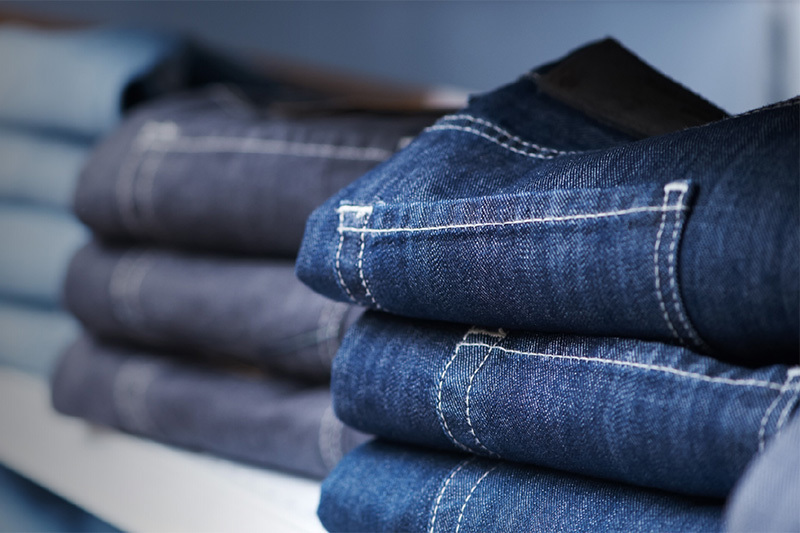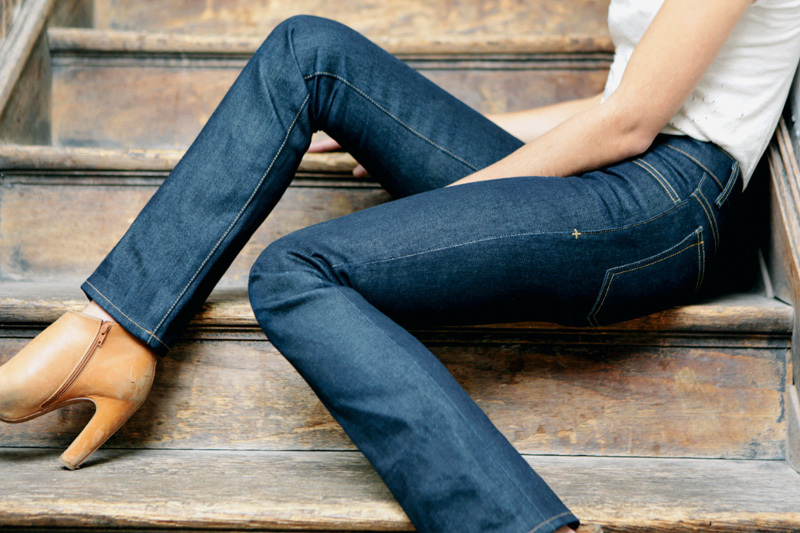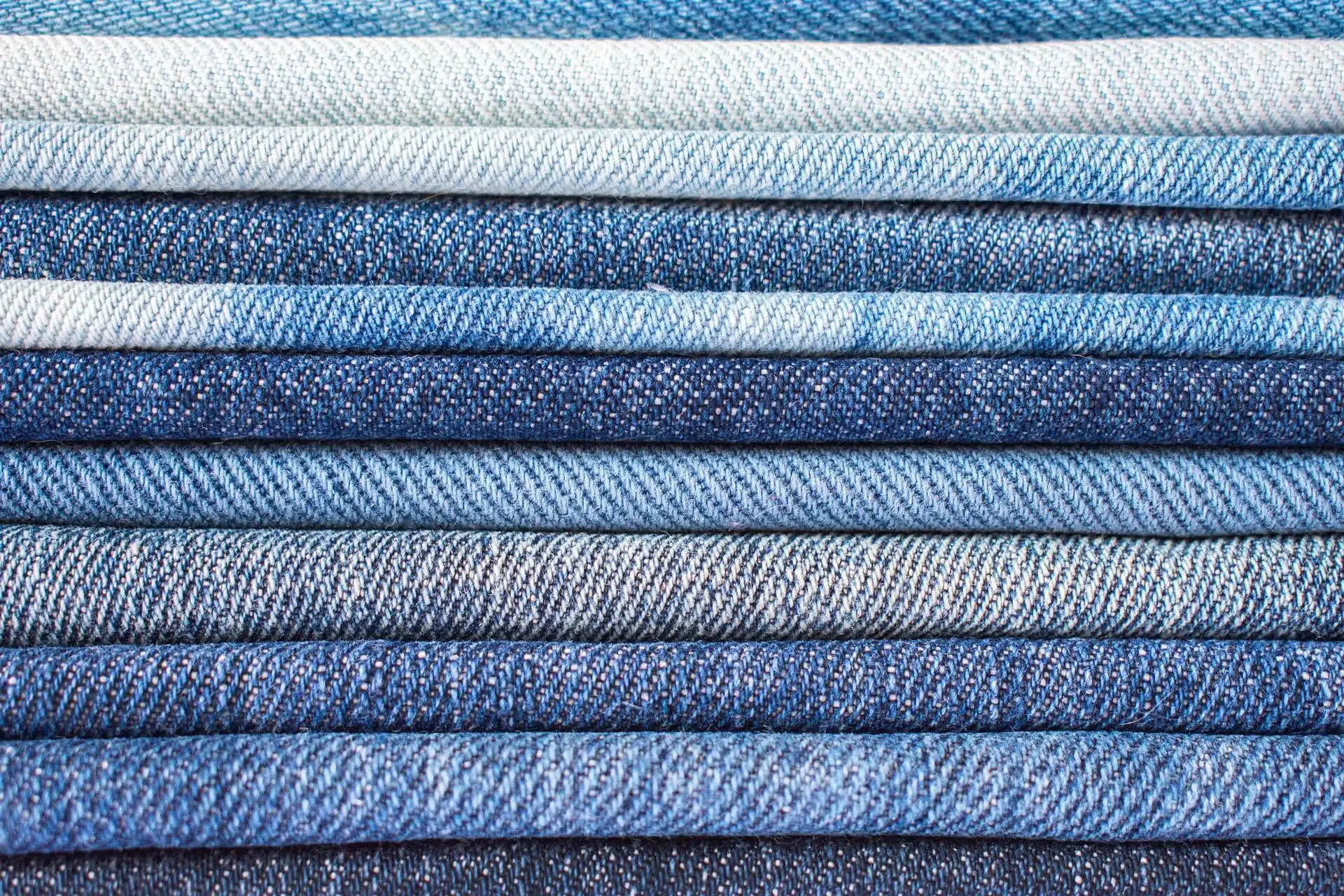A Comprehensive Analysis of Denim Fabrics: Types, Processes, and Decorative Techniques
Release time:
13 Mar,2025
Denim, a classic in the fashion world, comes in a wide variety of types, each with its own unique characteristics. Common types include stretch denim, non-stretch denim, slub denim, non-slub denim, as well as linen-cotton denim, mercerized denim, and coated denim. In addition, there are different series such as ordinary denim, combed denim, and polyester-cotton denim, as well as special styles such as gold and silver thread stripes, providing consumers with a diverse range of choices.

I. Diverse Types of Denim Fabrics
Denim fabric, a classic element in the fashion world, comes in a wide variety of types, each with its own unique characteristics. Common types include stretch denim, non-stretch denim, slub denim, non-slub denim, as well as high-quality fabrics such as linen-cotton denim, mercerized denim, and coated denim. In addition, there are different series such as ordinary denim, combed denim, and polyester-cotton denim, as well as special styles such as gold and silver thread stripes, providing consumers with a variety of choices.
Denim fabric, with its classic and fashionable characteristics, has become an indispensable source of creative inspiration for designers. Its presence can be seen in both spring/summer and autumn/winter collections. So, how can we gain a deeper understanding and distinguish these diverse denim fabrics? The key lies in grasping its thickness, a core indicator. According to the different thicknesses, denim can be divided into several grades, such as 4.5 oz, 6 oz, 8 oz, 10 oz, 11 oz, 12 oz, 13.5 oz, and 14.5 oz, each with its unique characteristics and applications.
4.5 oz denim is very light and thin, making it ideal for making summer women's vests and sleeveless shirts. 14.5 oz denim, on the other hand, is relatively thick, suitable for making winter men's cotton-padded jackets and padded clothes. As for the jeans we wear daily, their fabric thickness is mostly between 8 oz and 12 oz.
Denim fabrics are numerous and include plain weave, twill, herringbone, interweave, slub, twill, and flocked denim. In terms of composition, denim fabrics are divided into combed and carded types. Materials include 100% cotton, stretch (Lycra), cotton-linen blends, and those made with Tencel.
II. Craft Characteristics of Denim Fabrics
In the production of denim clothing, sewing technology is an indispensable part, directly affecting the final presentation of denim clothing. Therefore, understanding the craft characteristics of denim fabrics is crucial for designing high-quality denim clothing.
Stitching Process: Denim clothing stitching mostly uses 2-ply single-side double top stitching, or 2-ply single top stitching, 2-ply double-side double top stitching. The stitching color is usually khaki (or other contrasting colors), sometimes using color matching lines, which need to match the color after washing. In addition, special process lines such as zigzag lines and thickened hand-embroidered lines are used for decoration.
Accessory Selection: Commonly used accessories for denim clothing include grommets, four-hole buttons, rivets, eyelets, patches, and metal zippers. These accessories not only enhance the practicality of the clothing but also add diverse possibilities to the design.
Labeling: The labels on denim clothing include main labels, size labels, washing labels, flag labels, and side labels. These labels not only provide important information about the clothing but also play a decorative role and brand identification.
In the production of denim clothing, due to the shrinkage problem of denim fabrics, pattern adjustment becomes key. Ordinary denim usually has a horizontal and vertical shrinkage rate of 2% to 3%, while the shrinkage rate of stretch denim is as high as 10% or more. This makes pattern making relatively complex and requires continuous adjustments to ensure a close fit. In addition, the treatment of the knee area is also crucial. Some major brands have adopted 3D cutting technology to enhance the ease of movement of jeans. The cutting of denim suits tests the skills of pattern makers even more, especially when using high-stretch fabrics. How to maintain the flatness of the sleeves and achieve a beautiful appearance has become a major challenge.
III. Decorative Crafts of Denim Clothing
The decorative crafts of denim clothing are diverse, including stitching processes, accessory selection, and label marking. In terms of stitching processes, mainly 2-ply single-side double top stitching or 2-ply single top stitching, 2-ply double-side double top stitching are used. The color is mainly khaki, and color-matching lines are also used, which need to match the color after washing. In terms of accessories, grommets, four-hole buttons, rivets, eyelets, patches, and metal zippers are often used. These accessories are not only practical but also bring more possibilities to the design. In addition, label marking is also an indispensable part of denim clothing, including main labels, size labels, washing labels, flag labels, and side labels. They provide important information about the clothing and also play a decorative and Brand identification role. During production, due to the shrinkage problem of denim fabrics, pattern adjustment is particularly important. Ordinary denim has a horizontal and vertical shrinkage rate of 2% to 3%, while the shrinkage rate of stretch denim is even higher. This requires precise adjustment during production to ensure the fit and beauty of the clothing.
In recent years, denim fashion trends have been vastly different from the past. In addition to the meticulous design of washing changes, the decorative craftsmanship of denim clothing is now particularly valued.
Denim raw edge design, by using scissors to trim the hem of jeans and the trousers into a tattered style, and then supplemented with special lines, has become a new fashion darling.
Machine embroidery technology, including computer machine embroidery, adds rich patterns and shapes to denim clothing.
Hot-fix rhinestone technology, favored in the Russian market, adds a luxurious feel to denim.
Appliqué embroidery, hand embroidery, and bead embroidery show exquisite craftsmanship and artistic aesthetics.
Glue printing technology, but it should be noted that it may cause the hand feel to become hard and the pattern to fall off during washing.
Innovative laser technology, by burning off all the colors of the fabric, revealing the color of the fabric itself, creating a unique rendering effect.
In addition, denim fabrics also have wide matching properties and can be combined with wool, faux leather, corduroy, thick knitwear, and other fabrics to create a variety of styles. Whether it's five-pocket jeans, denim shirts, denim jackets, skirts, or coats, you can show your creativity and design talent.
Denim, a classic element in the fashion world, always leads the trend.
Its unique charm allows denim clothing to easily capture people's hearts, regardless of the changing fashion trends. Everyone's wardrobe has at least one favorite denim piece, whether jeans or other garments, accompanying us through every fashion moment. Next, let's explore the charm of denim, and experience the ingenuity of designers.
The term "Denim" originates from the English word "DENIM," referring to a twill-woven fabric that has been indigo-dyed. This fabric is now commonly known as denim. Therefore, the jeans we often talk about are actually made of denim fabric.
Denim, a word derived from the English "DENIM," originally referred to a twill-woven, indigo-dyed, heavy cotton twill fabric. However, today it has transcended the definition of a simple fabric and is closely associated with denim clothing and accessories. With the favor of movie stars, the pursuit of young people, and the creative efforts of fashion designers, denim products have always occupied a place in the fashion world. Hailed as the oldest fabric, denim has been rejuvenated by the birth of jeans and has become a timeless fashion choice.
When discussing the origin of denim clothing, we must trace back to the birth of denim itself. Denim, known as Denim in English, has an interesting history behind its name. About five hundred years ago, when Columbus discovered the New World, this durable and practical rough fabric had already appeared; at that time, it was mainly used to make sails. This fabric originated in the town of Nimes, France, so it was originally named "Serge De Nimes" in French. Later, when this twill fabric was first introduced to Britain, British merchants found the French name difficult to pronounce, so they simplified it to Denim, the denim we know today, sometimes also transliterated as Danning.
General washing, the mechanized washing method we are familiar with, maintains a water temperature in the range of 60-90°C. After adding an appropriate amount of detergent, it undergoes a washing process of about 15 minutes, then rinsed with clean water and a softener is added, making the fabric softer and more comfortable, and the visual effect more natural and clean. The duration of general washing and the amount of chemicals used are key factors affecting its effect. Based on these factors, general washing can be divided into light general washing, general washing, and heavy general washing. Light general washing usually lasts about 5 minutes, general washing is 15 minutes, and heavy general washing is up to 30 minutes (the actual time may vary), but there is no clear boundary between these three washing methods.
Stone washing, or STONE WASH, is a washing method that adds pumice stones to the washing water for polishing. This washing technique causes the pumice stones to rub against the garment, thus performing deep cleaning in a low-water-level environment in the tank. To achieve different washing effects, customers can choose to use yellow stones, white stones, AAA stones, artificial stones, or rubber balls for washing. After washing, the surface of the garment presents a gray, old, natural texture, along with slight to severe wear marks. Before stone washing, general washing or bleaching can be performed, and after stone washing, bleaching is usually performed to further improve the washing effect.
Enzyme washing (ENZYME WASH) utilizes a cellulase enzyme called an enzyme. Under specific pH and temperature conditions, this enzyme can degrade the fiber structure, allowing the fabric surface to fade and de-hair in a gentler way, producing the so-called "peach skin" effect and giving the fabric surface lasting softness. Enzymes can be used with stones; this washing method is usually called enzyme stone washing (ENZYME STONE WASH).
Sand washing (SAND WASH) usually uses alkaline or oxidizing auxiliaries to give the garment a faded effect and create a vintage, aged feel. By cooperating with stone washing, a fine and soft frost-white fluff will be formed on the surface of the sand-washed fabric. In addition, adding an appropriate amount of softener can further enhance the softness and comfort of the fabric, making the wearing experience more pleasant.
Washing technology, once widely used in clothing production, came at the cost of worker health and serious environmental pollution. In the washing process, the sandblasting technique for creating a vintage look has been controversial due to the lack of necessary safety protection for workers and has even been banned in some countries to prevent silicosis. In addition, the hundreds of toxic chemicals used in the washing process not only pose a threat to workers but also cause irreversible damage to jeans. These chemicals may remain during cleaning and dyeing, thus affecting the health of the wearer.
Levi's (Levi's): As a pioneer of jeans, Levi's originated in the American West and has a resounding reputation. In 1853, Levi Strauss, a young Jewish businessman, designed low-waisted, straight-legged, tight-fitting pants to solve the problem of excess canvas, which were very popular among gold miners in San Francisco.
LEE: As one of the three classics of American denim culture, LEE has always maintained a perfect combination of practicality and fashion. In the evolution of jeans from practicality to fashion, LEE has played a pivotal role.
Calvin Klein: Calvin Klein, a leading American designer brand, has won four prestigious clothing awards and is known for its perfectionism. Every CK garment perfectly embodies the brand's unwavering pursuit of fashion and quality.
GAP: GAP's history is similar to that of DSQUARED2. The founder, Doris Fisher, decided to create his own brand because he couldn't find jeans that fit him well. He focused on producing pants that were suitable and durable for himself, laying the foundation for GAP's rise.
Giorgio Armani: In the fashion world, Giorgio Armani's position is unshakeable. Its denim series is praised for its perfect blend of practicality and fashion. In 2008, Armani Jeans boldly innovated, incorporating leather patchwork elements into its jeans design, leading a new trend.
Finally, let's conclude with the denim series by XIMON LEE, the gold award winner of last year's highly anticipated HM Design Award.
With the booming development of the Chinese economy and the increasing pursuit of clothing aesthetics by consumers, jeans have won the favor of the public due to their wear-resistant and dirt-resistant properties. From practical daily wear to a fashionable symbol of trends, the social role of jeans is constantly evolving. Today, consumers hope to show their personality and taste through jeans, pursuing not only their durability but also their unique fashion charm. Although denim culture started late in China, it has shown strong development momentum and gradually occupies a leading position in the market.
The advancement of China's industrial modernization has brought new development opportunities to the denim industry. Today, China has become an important base for international denim production. Many leading denim fabric and clothing companies are equipped with advanced equipment such as air-jet spinning, automatic winding, and yarn-dyed dyeing. The application of shuttleless looms and heavy pre-shrinking finishing machines has also greatly improved the development and production capacity of denim products. So, what are the main types of denim fabrics in the Chinese market? Among them, ring-spun denim, warp and weft bamboo-knot denim, super indigo-dyed denim, and color-matching and assorted denim are all highly anticipated products.
Next, we will discuss the production and processing of these different types of denim fabrics one by one. First is the ring-spun denim, which uses ring-spinning technology. Compared with air-jet spinning, its yarn quality is superior, and the drape is better. After washing, its unique bamboo-knot texture style becomes more obvious, further enhancing its market competitiveness.
Warp and weft bamboo-knot denim attracts attention with its unique bamboo-knot effect. This denim, through special weaving technology, cleverly combines bright yarn and bamboo-knot yarn to create a unique visual effect. Whether it is long bamboo knots or short bamboo knots, they bring a unique fashionable atmosphere to the denim.
Ultra-indigo dyed denim breaks through the limitations of traditional indigo dyeing. By improving the dyeing process, denim clothing can present a deep and bright color after washing. This denim is not only bright in color but also durable and wear-resistant, and is deeply loved by consumers.
Double-color denim and variegated denim create unique two-color effects and colorful styles through different dyeing processes, respectively. Double-color denim undergoes desizing, washing, and reactive dyeing on the basis of ordinary fabrics, resulting in a two-color difference between warp and weft yarns; while variegated denim uses reactive sulfur reduction dyeing to create a rich color selection beyond blue.
With the continuous changes in market demand and the improvement of consumer aesthetic tastes, the processing technology and styles of denim are becoming increasingly diversified. These different types of denim fabrics undoubtedly provide consumers with a more diversified range of choices.
- All
- Product Management
- News
- Introduction
- Enterprise outlets
- FAQ
- Enterprise Video
- Enterprise Atlas
More information







